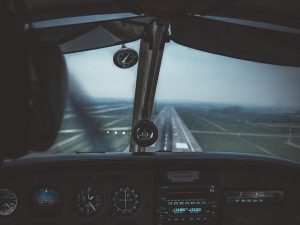
Yokes have been around since the early days of aviation. Consisting of a U-shaped control wheel, it allows pilots to adjust an airplane’s roll and pitch. Pilots can tilt the yoke forward, backward and side to side. Yokes allow for direct control over the airplane’s roll and pitch.
While many airplanes still have a yoke, however, some now have a side stick, instead. Yokes, for instance, are commonly found in Boeing airplanes, whereas side sticks are typically found in Airbus airplanes. What is a side stick exactly, and how does it differ from a yoke?
What Is a Side Stick?
In the world of aviation, a side stick is a stick-based control lever that allows pilots to adjust an airplane’s roll and pitch. It’s known as a “side stick” because it’s mounted on the side of the console.
Side sticks work in conjunction with fly-by-wire systems. When a pilot moves the side stick, the fly-by-wire system will interpret the input and convert it into the necessary mechanical or hydraulic adjustments.
Side sticks are typically spring-centered. They feature an internal spring that constantly applies pressure to move the stick to its default, centermost location. When the pilot releases the side stick, for instance, the spring will force it back to its default location.
Side Sticks vs Yokes
While they are both used to adjust an airplane’s roll and pitch, side sticks and yokes differ in several ways. They feature entirely different designs. As previously mentioned, yokes are typically U-shaped, whereas side sticks are stick-shaped levers.
Side sticks and yokes are also located in different areas. Yokes are typically mounted on the center console, directly in front of the pilot. Side sticks, on the other hand, are mounted on the side. Because they are mounted on the side, side sticks offer better visibility of instruments and displays.
Another key difference is that side sticks are almost always electronic via fly-by-wire, whereas yokes are either mechanical/hydraulic or electronic. Traditionally, yokes are connected to cables, rods or hydraulic systems. Nearly all side sticks, though, operate as part of a fly-by-wire system that involves the use of electrical signals.
In Conclusion
Both yokes and side sticks serve the same fundamental purpose of controlling airplane’s roll and pitch. The yoke represents aviation’s mechanical roots, offering direct and tactile control through cables or hydraulics. The side stick, by contrast, symbolizes the digital age of fly-by-wire technology, where pilot input is interpreted electronically.



